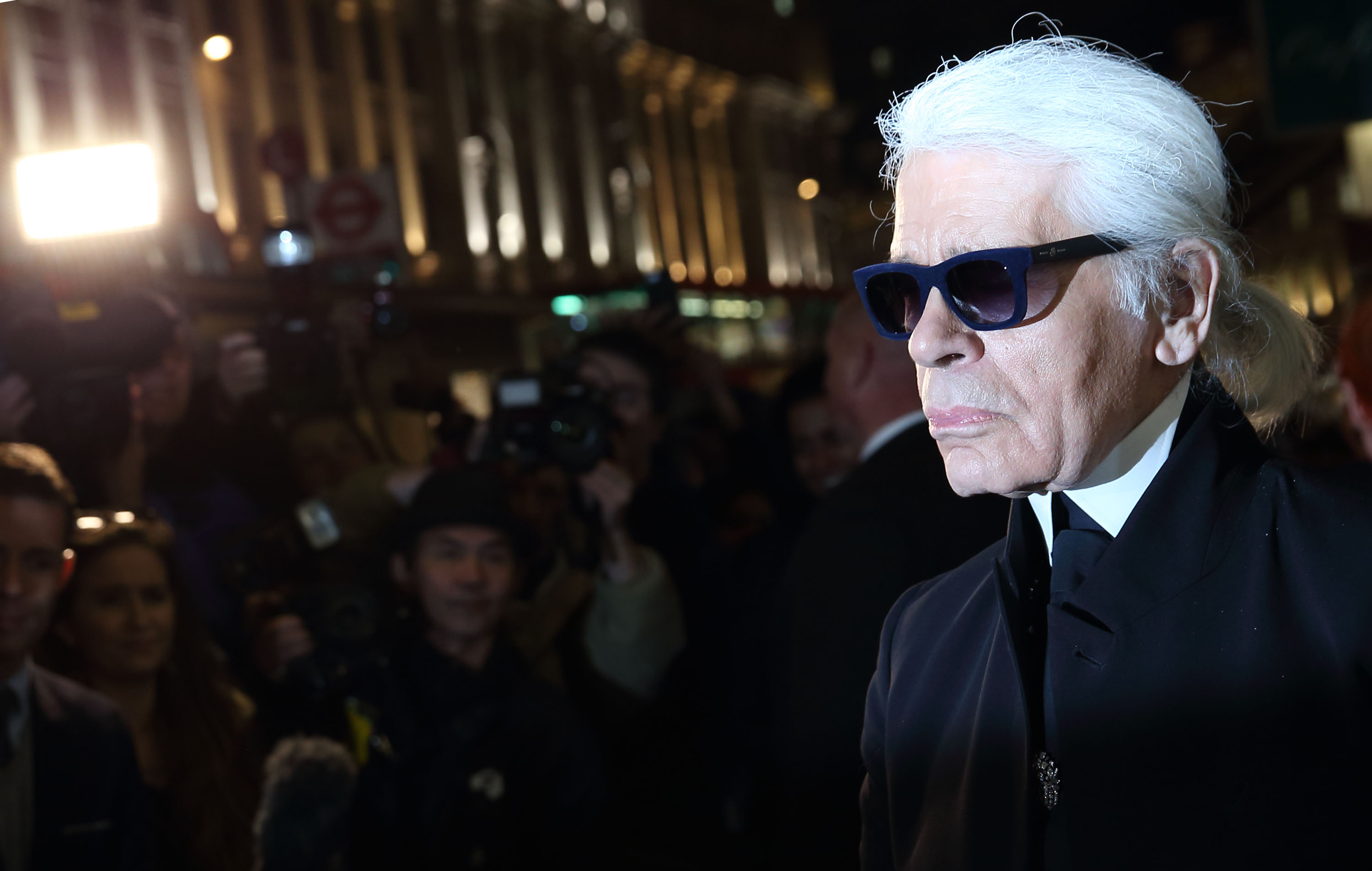
The German-born designer Karl Lagerfeld, one of fashion’s most influential figures who also had a foot in the art world, has died in Paris at age 85.
Largerfeld once dismissed designers who wanted to be visual artists, saying they should stick to art directing. But as his fashion career blossomed, he continued to pursue other artistic endeavors, becoming an accomplished photographer who exhibited his work across Europe.
French media first reported his death on Tuesday morning, February 19, and celebrities around the world were quick to take to social media to express sympathy for the loss of one of the fashion world’s most influential forces. He was best known as the creative director of Chanel, the fashion house he reinvented, and also served as creative director of Fendi and founder of his own eponymous label. Bernard Arnault, the billionaire art collector and chairman of LVMH, which owns Fendi, called him a creative genius, noting his encyclopedic knowledge of culture.
Lagerfeld’s final catwalk appearance was last December, when he brought Chanel’s globetrotting fashion show to the Temple of Dendur at the Metropolitan Museum of Art. (It was the first time in more than three decades that the Met hosted a runway show.) There had been speculation about his health when he was not present at Chanel’s haute couture show last month in Paris. He was admitted to the American Hospital in Paris on Monday morning; the cause of his death is still unknown.
A photo from German fashion designer Karl Lagerfeld’s series “Modern mythology 2013” in the show “Feuerbach’s Muses – Lagerfeld’s Models” in the Kunsthalle in Hamburg. Photo: Maja Hitij/AFP/Getty Images.
A creative polymath, Lagerfeld was affectionately known as the “Kaiser” because of his German roots, but he has long been associated with France. Born in Hamburg in 1933, Lagerfeld began drawing at an early age and was obsessed with all things France, especially French painters. He moved to Paris with his mother when he was still a teenager. In 1955, he famously became the assistant of Pierre Balmain, after he won a fashion design contest judged by designers Pierre Cardin and Balmain, among others. (His contemporary, Yves Saint Laurent, came in third.)
Lagerfeld took up photography in 1987, starting off by photographing his own designs and later exhibiting his monochrome landscapes and moody portraits in black and white, the same palette he seized on for his signature look. Lagerfeld never strayed from his personal uniform: a black suit, shades, and a perfect white shirt pulled together with a tie. His white hair was always neatly pulled back in a ponytail.
Lagerfeld fused his own art and fashion at Paris Fashion Week in 2013. For his Spring/Summer 2014 collection for Chanel, Lagerfeld designed 75 pieces of oversized art that lined the runway at the Grand Palais. He also brought fashion into the realm of architecture with a collaboration with star architect Zaha Hadid in 2008, when the two released the Mobile Art Container, a handbag-inspired, portable pavilion that was built to house 20 artists’ works to mark the anniversary of the release of Chanel’s iconic black-and-white, quilt-stitched bag.
Pieces of art designed by Karl Lagerfeld prior to the Chanel show as part of the Paris Fashion Week Womenswear Spring/Summer 2014 at Grand Palais. Photo: Pascal Le Segretain/Getty Images.
Though he became a Parisian in spirit, he remained well-loved by his home country. Germany held two retrospectives about Lagerfeld, “Karl Lagerfeld. Modemethode” at the Federal Gallery in Bonn in 2015 and “Parallel Contrasts” at Museum Folkwang in 2014. In his hometown of Hamburg, the exhibition “Modern Mythology” juxtaposed the work of neoclassical 19th-century painter Anselm Feuerbach with Lagerfeld’s photographs in 2013.
In 2015, during a collaborative launch of the online store karl.com with artnet, Lagerfeld told artnet CEO Jacob Pabst why he had not visited any recent exhibitions of his art in Germany. “The minute you start looking at your past work, there is a problem for your future work,” Lagerfeld said.
The artist-designer, who collected photography and furniture, had numerous other ties to the art world. He ran a gallery in Paris for a time. A natural in front of the camera, he was featured in Andy Warhol’s 1973 film L’Amour. He had mixed feelings about Warhol, recalling that the American artist was pushy, unlike himself. “I never push people,” Lagerfeld said. “There was something more perverted in his mind than in mine.”
But Lagerfeld and Warhol had several things in common: a sharp tongue, a ferocious work ethic, and a fondness for celebrity portraiture. In 1991, Lagerfeld told Aperture magazine about his lesser-known penchant for making society portraits and portraits for royalty. “I sketch very well,” he said. “I have drawn portraits all my life. When I was a child, I wanted to be a portrait painter.”